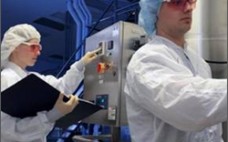For decades, the complexity of albumin has been researched extensively, yet many manufacturers and users of the protein have treated it more as a commodity. Because albumin has been readily available, suppliers and purchasers alike have frequently relied on more obvious measures of “purity” and other minimal release criteria to make their decisions. If a lot does not perform well in practice, the typical supplier’s response has been to investigate the manufacturing process for deviations, then correct them…
Upstream Processing
Improved HCP Quantitation By Minimizing Antibody Cross-Reactivity to Target Proteins
Host cell proteins (HCPs) are process-related impurities derived from a host cell expression system that may be present in trace amounts in a final drug substance. During biologics development, it is important to demonstrate that a bioprocess is efficient in removing HCPs and that it provides consistent control of HCP levels. Several techniques are typically used for detection, quantitation, and risk evaluation of HCPs in biologics. The most common are enzyme-linked immunosorbent assays (ELISAs), Western blotting, sodium-dodecyl-sulfate polyacrylamide…
Nutrient Supplementation Strategies for Biopharmaceutical Production, Part 3
Scale-up studies are needed for assessing cell culture production system options and for testing nutrient supplementation techniques as well. With the many supplementation options available, choices need to be made as early in product development as possible because advantages can change with scale. One published fed-batch scale-up study testing from 3 L up to 2,500 L highlights items to be considered in addition to the nutrient supplementation process such as the impact of pH and CO2 control (1).…
Accelerating Bioassay Transfer in a GMP Environment
Most products in discovery by pharmaceutical companies today are biopharmaceuticals. Made by living organisms, these are typically large–molecular-weight products that rely on their secondary and tertiary structure for therapeutic effectiveness. Synthetic small molecules and biopharmaceuticals both require analytical verification for release, but only biopharmaceuticals require functional potency assays for investigational new drug (IND), biological license application (BLA), and new drug application (NDA) submissions. Those activities often require elaborate transfers of diverse, biological, product specific assays that carry greater chances of…
Using In Vitro Assays for Therapeutic Enzyme Characterization
A number of biopharmaceuticals are enzymes that act in vivo on high-molecular substrates. It can be a challenge to develop in vitro methods for accurately assessing their biological activity. Interest is also developing in using enzyme kinetic parameters as product quality attributes under the quality-by-design (QbD) initiative. Among biotechnology therapeutics, the conventional method of expressing potency is in units/mg of biopolymer. For enzymes, a unit of activity was defined in 1958 by the International Union of Biochemistry and Molecular Biology…
Nutrient Supplementation Strategies for Biopharmaceutical Production, Part 2
Some of the numerous feeding strategies are more appropriate than others for certain types of cell culture production systems. Once a nutrient supplement has been identified as described in Part 1 of this three-part review (1), a supplementation strategy must be chosen. Supplementing at too great a rate may expose log-phase cells to stresses such as increased osmolality and lactate levels that would inhibit biomass expansion. But inadequate supplementation can lead to early apoptosis through rapid depletion of selected important…
A Risk-Based Aproach to Establishing Animal-Component–Free Facilities
Bovine spongiform encephalopathy (BSE) and its potential to affect humans emerged as a concern in the 1990s. So suppliers of many essential animal-sourced components used in cell culture and fermentation processes became concerned about the potential for material contamination with prions. Viruses also can be present in raw materials derived from animal origins. Many important drug and vaccine products are made by mammalian cell culture or bacterial fermentation, so their biological safety is paramount. However, it is very difficult to…
Nutrient Supplementation Strategies for Biopharmaceutical Production
Cell-culture–related in vitro recombinant protein production is currently a $70-billion/year business. In 2007, biotech drug sales grew by 12.5%, twice as fast as standard pharmaceuticals (1). Current ongoing efforts to maximize productivity in both time and volume directly affect the scale and capital investment required for a bioreactor suite. As cells reach higher concentrations more quickly while each cell pumps out more product than ever before, the number and scale of bioreactors can be reduced. To that end, not only…
Approach to Validation & Implementation of Single-Use Systems
While many of the reasons to move to single-use systems have been well defined over the last few years, there are still concerns with the lack of information regarding validation and implementation of the systems. In this on-demand educational webcast, Christopher Mach of Pall Life Sciences details the step-by-step approach to validation and implementation of single-use systems in biopharmaceutical manufacturing. You’ll learn about:
• A Summary of the Regulatory Position Regarding Validation
• Validation Program Key Points
• Pall Approach to Organizing and Operating an Appropriate Validation Program
• Pall Validation Capabilities
Join Mach as he utilizes a core study of extractables/leachables using the Pall AllegroTM Single-Use System to address industry concerns and help illustrate the necessary components of a successful validation program.
Increased Selection Criteria for Production Media
Operators of biotechnology facilities are facing an increase in selection criteria for production media – new ICH and FDA imperatives, new analytics and monitoring, platform production initiatives and more. In this on-demand webcast, William Whitford of Thermo Scientific discusses:
• Reasons for the Increase in Selection Criteria
• Particular Criteria Discovered by Thermo Fisher Scientific
• Application of how Criteria can be Resolved
Join Whitford as he introduces two studies performed at Thermo Scientific that demonstrate how selection criteria can be solved and resolved to provide transparency and ease for biotechnology and bio production operators.


